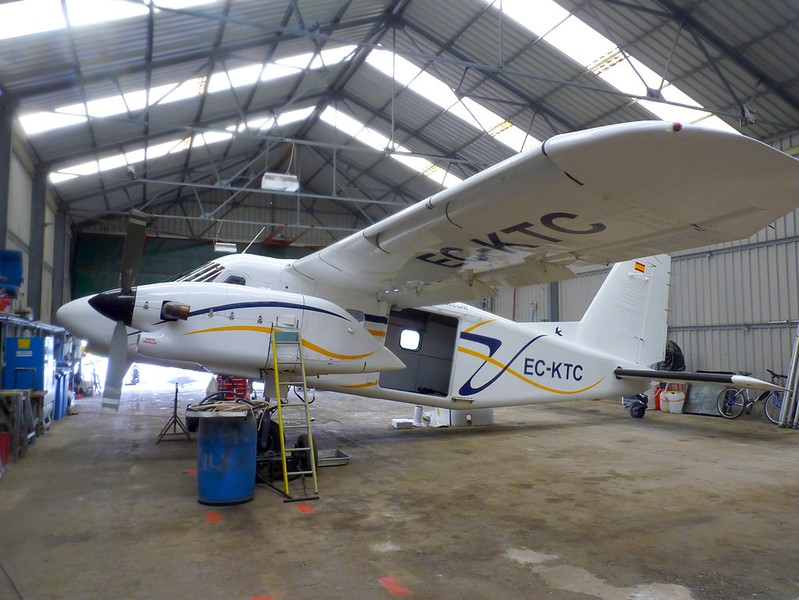 Hibaldstow
Hibaldstow
Validation date: 06 12 2012
Updated on: Never
Views: 6094
See on the interactive map:
53°29'46"N 000°31'18"W
Runway: ../.. - ...meters/...feet - concrete
Runway: ../.. - ...meters/...feet - concrete
Runway: ../.. - ...meters/...feet - concrete
Hibaldstow airfield (RAF Hibaldstow) was an airfield 225 kilometers north of London.
The airfield was built as a Bomber Command airfield and was commissioned on 12th May 1941. Bomber Command did not become its owner though, instead the airfield was taken on by Fighter Command. With its 3 hard runways, it was unique amongst early war fighter airfields. 255 Squadron was the first to take up residence with Defiant night fighters, drawn from RAF Kirton-in-Lindsey. 255 Sqn made one kill, an He-111 which was shot down near Louth on 5th June 1941. In June 1941 the Defiant's were replaced by Beaufighter II's. 255 Sqn was replaced by 253 (Hyderabad) Squadron from RAF Skeabrea, Orkney, which arrived on 23 September 1941 with Hawker Hurricanes. Douglas A-20 Bostons (Havocs) of 1459Flt from RAF Hunsdon, Hertfordshire also came to the base.
Combined, 253 Sqn and 1459 Flt took part in the Turbinlite tests. Turbinlite was an experimental search light and early form of radar that was being trialled at 10 RAF stations across the country. 1459 Flight's Boston Havocs were fitted with the Turbinlite and Hurricanes from the 253 Sqn would accompany them. The aim was for the Havoc to find an enemy bomber with its radar and illuminate it with its searchlight. This would allow a pair of Hurricanes to shoot down the enemy planes, as the Havocs had no guns.
In September 1942 1459 Flt was renumbered to 538 Sqn. In November 1942 253 Sqn left the base.
The Turbinlite wasn't much of a success and the experiment was abandoned in January 1943. 538Sqn disbanded that same month. The base was put on care and maintenance on 23 January 1943.
Havoc Mark II (Turbinlite), AH470 F, of No. 1459 (Fighter) Flight based at Hibaldstow, Lincolnshire, on the ground (IWM © (MH 5711)).
Hurricane Mark IIB night fighters, (Z3971 SW-S Samasthans II nearest), of No. 253 Squadron RAF lined up at Hibaldstow, Lincolnshire (IWM © (CH 4391))
On 9 My 1943 the airfield reopened, this time as home to 53 Operational Training Unit from South Wales. 53 OTU flew from Hibaldstow for two years, training qualified pilots in target practice, formation flying and night fighter training as a refresher. Hibaldstow also became a satellite of RAF Kirton-in-Lindsey when that station also changed roles to become a training station instead of a fighter base. 53 OTU remained at the base until the end of the war.
Shortly before the end of the war, WAAF Margaret Horton had an unexpected ride on the tail of a Spitfire while acting as a tail weight. She was sat on the tail of the plane, a common practice, in order to keep it from overturning while it taxied to the end of the runway. The pilot, anxious to be airborne and unaware she had been ordered to sit on the tail, failed to stop to allow the WAAF to jump off the tail. He just carried on with Margaret Horton hanging on for grim death, unaware that he had a 'passenger' on the tail.
'I thought the aircraft was tail-heavy', he said later. The Spitfire had risen to 800 feet or more when the strange shape of the tailplane was noticed from the ground. The pilot was talked back in without being told what had happened. The aircraft landed safely with Margaret Horton still in one piece. How silly the RAF could be was shown when she was reprimanded for her unofficial flight and charged for the loss of her beret. She stayed in the RAF however, was posted to West Raynham later and, despite her ordeal, survived into her eighties.
No photos or maps from the second half of the 20th century have been located
The final unit to arrive at Hibaldstow was the 5 (P) AFU who carried out a similar role to 53 OTU, training already qualified pilots in advanced techniques. The group flew Hurricanes, Spitfires, Ansons and Harvards until being disbanded on 6 August 1947. The last plane to fly from Hibaldstow was a Harvard on 6 August 1947. That same day RAF Hibaldstow finally closed.
The airfield was sold off in 1960 or 1961. It was largely converted back into farmland, but large sections remained intact. Over the years it has also been used for Sunday markets, as a skid-pan by Lincolnshire Police and by a local parachute club. The control tower was converted to a two-storey house in 1976.
The airfield was taken over in 1992 as a parachute centre and has run skydiving courses there continuously since this period. As one of the biggest civilian dropzones, they have become a regular host to the British National Championships. Some small aircraft also call the base home.
In September 2012 a plan was announced to set up a Green Power Plant at the airfield.
Hibaldstow in 2003, with some aircraft parked on the north side of te airfield (Google Earth)
Hibaldstow in 2008 (Google Earth)
Hibaldstow in May 2010 (AirfieldinformationExchange.com).
Do-28 EC-KTC hangared at Hibaldstow in July 2012 (photo by ZD703, on Flickr). At least three more Do-28 fuselages and wings (ex-G-BWCO and two former Kenyan Air Force) were observed stored at the airfield.